SAN FRANCISCO REAL ESTATE MARKET UPDATE – August 2022
August 18, 2022
BUSINESS

August 18, 2022
BUSINESS

Note: You can find the charts & graphs for the Big Story at the end of the following section.
_________________________
Rising rates, rising prices, and economic slowdown, but homes still ahead
Economic outlooks seem to change month to month, and yet again, we find ourselves in a unique moment in time. The Fed rapidly switched from loose to contractionary monetary policy in March and recently increased the federal funds rate by 0.75% — the biggest increase since 1994. The effects have yet to curb inflation, which is still at a 40-year high (+8.5% CPI year-over-year). On a monthly basis, the Bureau of Labor Statistics (BLS) collects the prices of approximately 94,000 items from a sample of goods and services to calculate the Consumer Price Index (CPI). We didn’t look into everything in the BLS sample, but if you’re like us, it feels like everything we buy is closer to 50–100% higher than it was a year ago, or even several months ago. While prices are rising, the cost to borrow has also gotten more expensive, which is dampening demand.
We are starting to see this play out in the housing market. We are noticing more inventory coming to market, coupled with fewer sales. We must, however, provide a caveat: The housing inventory is still historically low. As rates rise, especially as rapidly as they have this year, buyers can get priced out of the market quickly and must reconsider their budgets.
A year ago, the average 30-year mortgage rates hit their lowest levels in history and have more than doubled since then, to 5.81%. Let’s take a look at some numbers to see how assets have performed in the first half of 2022: The S&P 500 declined 21% (the worst first half of the year since 1970), the NASDAQ is down 30%, and Bitcoin and Ethereum have dropped 59% and 71%, respectively. At the same time, U.S. housing prices increased by 15% nationally. Home prices, simply, rarely go down. Even if you weren’t directly affected by the 2006 housing bubble, you likely knew someone who was. One lasting effect of the housing bubble is the perception that home prices decline much like other risk assets, which isn’t the case. Stocks, bonds, and cryptocurrency are fungible assets that allow for large, multiplayer markets. The housing market has only recently become more efficient because of technology, but too many factors play into a home’s value, preventing regular downturns in the market. Large declines in liquid assets do affect demand for homes, though, as people tend to reconsider buying when they feel (and objectively are) less wealthy during dips in those markets.
Home prices are highly likely to continue rising despite rising rates. If you were waiting for rates to drop, they won’t. The low but rising supply continues to make the market competitive and, as more homes come to market, could mark the early stages of market normalization. As always, we will continue to monitor the housing and economic markets to best guide you in buying or selling your home.
*Real GDP is inflation-adjusted GDP, which is the broadest measure of goods and services produced. All references to GDP use Real GDP figures.

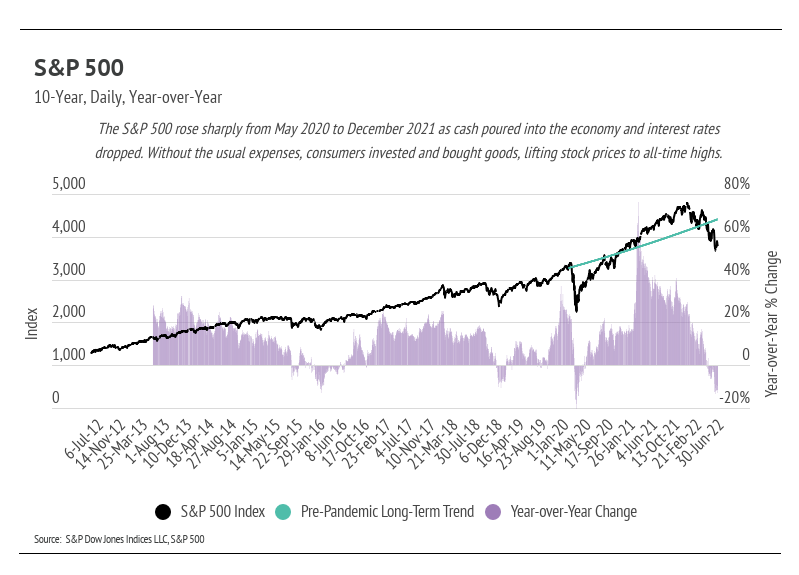
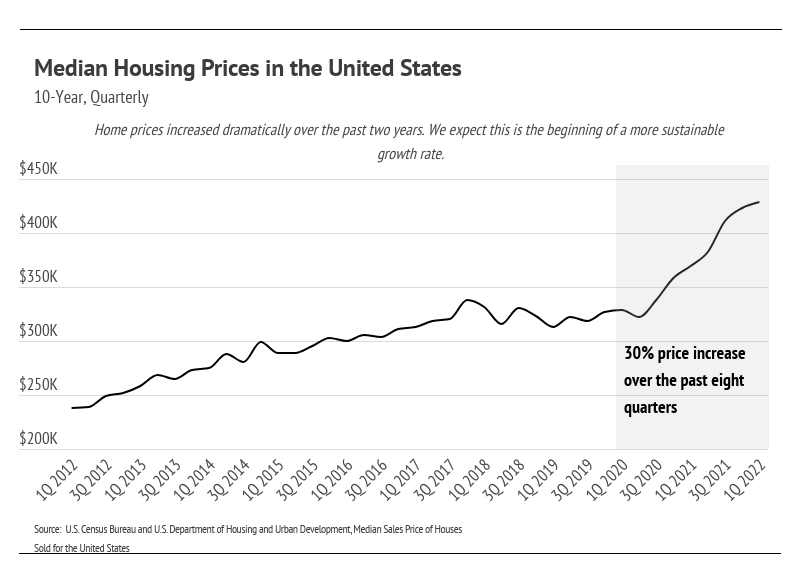
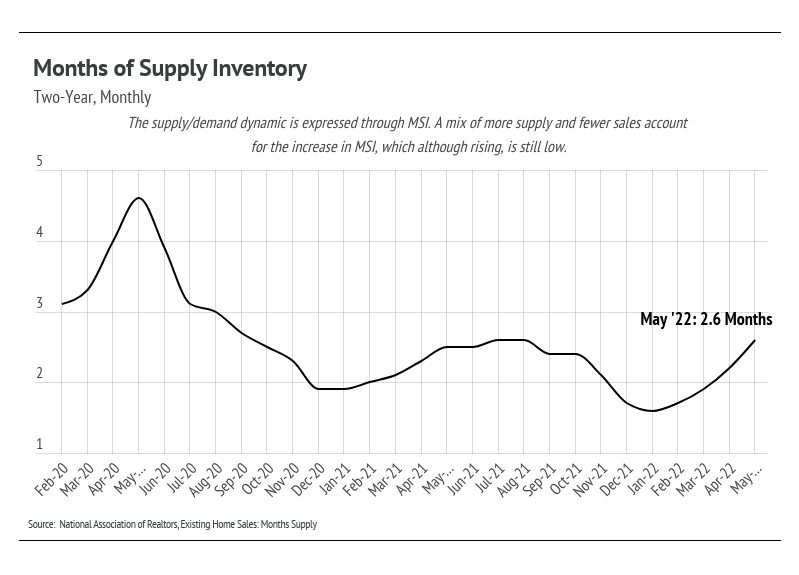
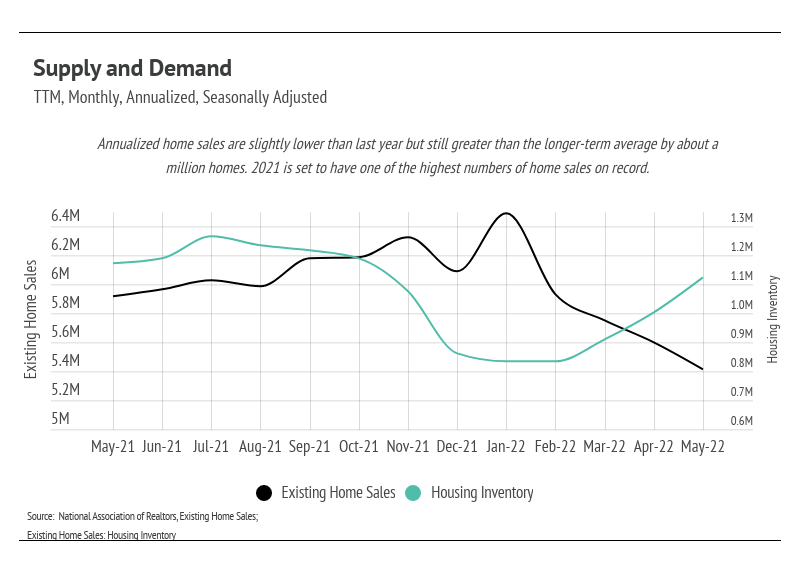
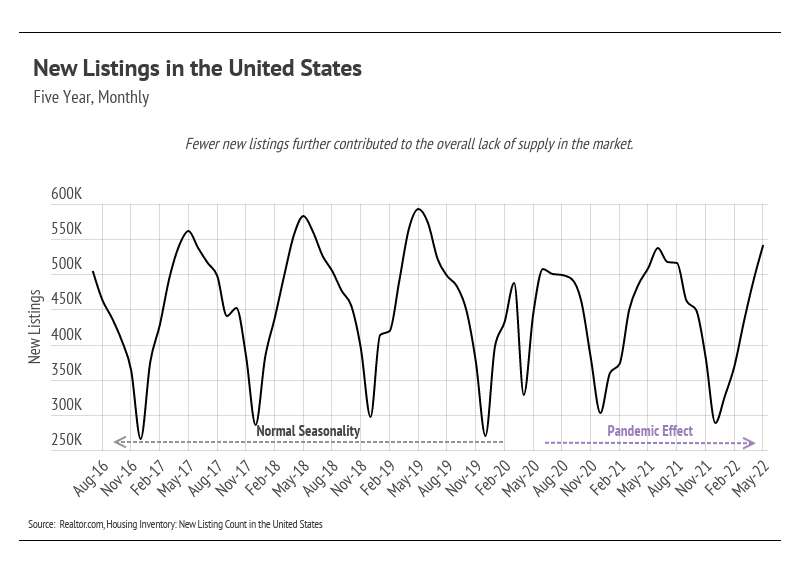
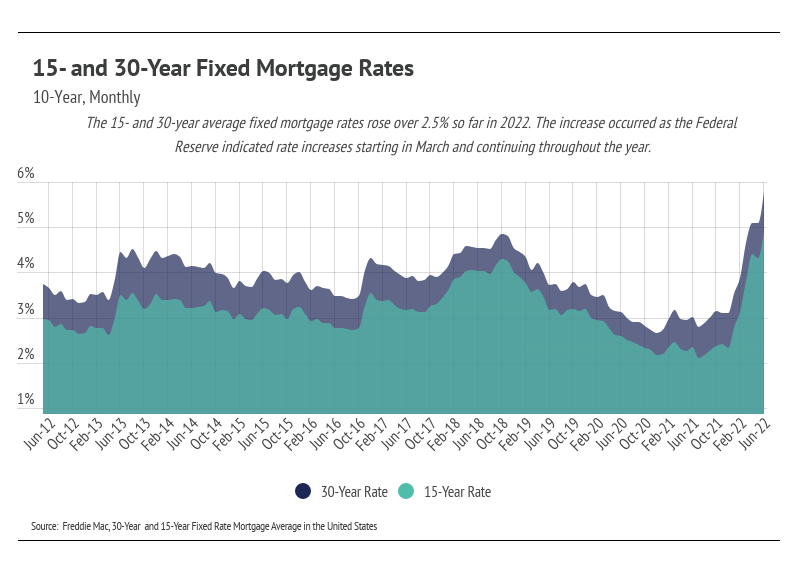
Quick Take:
Note: You can find the charts/graphs for the Local Lowdown at the end of this section.
Home prices hold steady in the face of rapidly rising rates
The median single-family home price declined month-over-month, moving further away from the March 2022 peak, while the median condo price rose, landing just below the all-time high it reached in April. After two years of sustainable price growth (+14 percent over the past two years for single-family homes based on price per square foot), it’s hard not to think that rate increases have caused prices to bump into a ceiling. Without the aid of super low financing options, fewer potential buyers will participate in the market. So far in 2022, the average 30-year mortgage rate has increased over 2.5%, which equates to an approximately 33% increase in monthly mortgage payments. In other words, the new mortgage rate adds $1,460 per month on a $1,000,000 30-year fixed mortgage, for example.
Even with the rate hikes, which are only expected to continue this year, home prices aren’t dropping outside of normal month-to-month movements, nor would we expect them to. Supply is still historically low, and high demand in San Francisco is always present, which will protect prices from experiencing a major downturn. Prices will likely follow a similar trend to last year, with mild growth through the summer and fall months. But, as we mentioned earlier, as rates increase, the same price becomes more expensive, unless you are buying with cash.
We can’t stress enough how important sustainable price growth is for the housing market, especially in one of the most affluent markets in the world. Because homes are not only living spaces but also investments, a steadier growth rate of 6–8% annually is still a great return.
Sales slowdown
San Francisco’s housing inventory continued to fall in June, bringing the already low inventory back toward all-time lows. Over the past 20 months, inventory has trended lower and settled at a depressed level. The number of single-family homes on the market in June 2022 is 39% lower than in June 2020, with 16% fewer condos. San Francisco is particularly sensitive to rate hikes due to the high absolute dollar cost of housing. Many homebuyers are also home sellers, moving from one home to another. Homeowners who bought or refinanced over the past two years locked in one of the lowest rates in history, making moving a more difficult financial decision. This is likely a large cause of fewer new listings coming to market and the June decline in sales.
This isn’t to say demand is low, however, especially relative to supply. Sellers can expect multiple offers, and buyers should come with competitive offers.
Months of Supply Inventory indicates a sellers’ market for single-family homes
Months of Supply Inventory (MSI) quantifies the supply/demand relationship by measuring how many months it would take for all current homes listed on the market to sell at the current rate of sales. The long-term average MSI is three months in California, which indicates a balanced market. An MSI lower than three indicates that there are more buyers than sellers on the market (meaning it’s a sellers’ market), while a higher MSI indicates there are more sellers than buyers (meaning it’s a buyers’ market). Single-family home MSI has trended lower every month of 2022, and currently indicates a strong sellers’ market, while condo MSI implies a more balanced market.
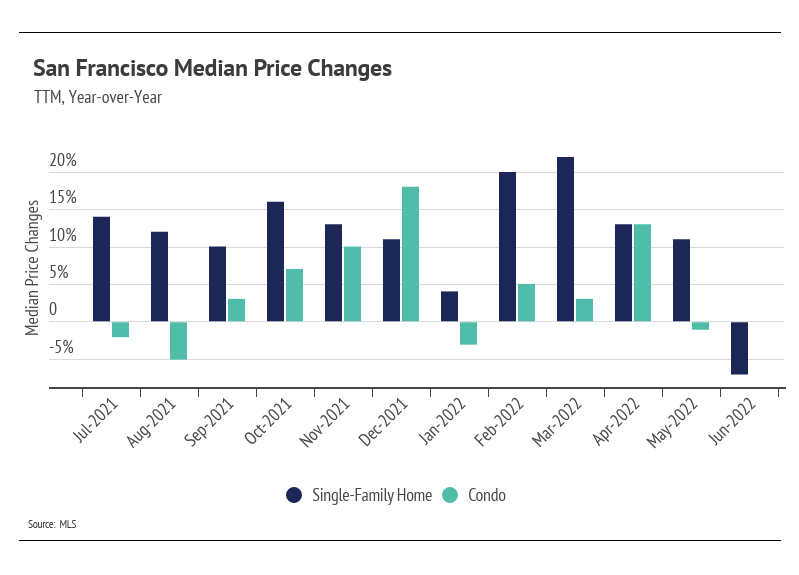
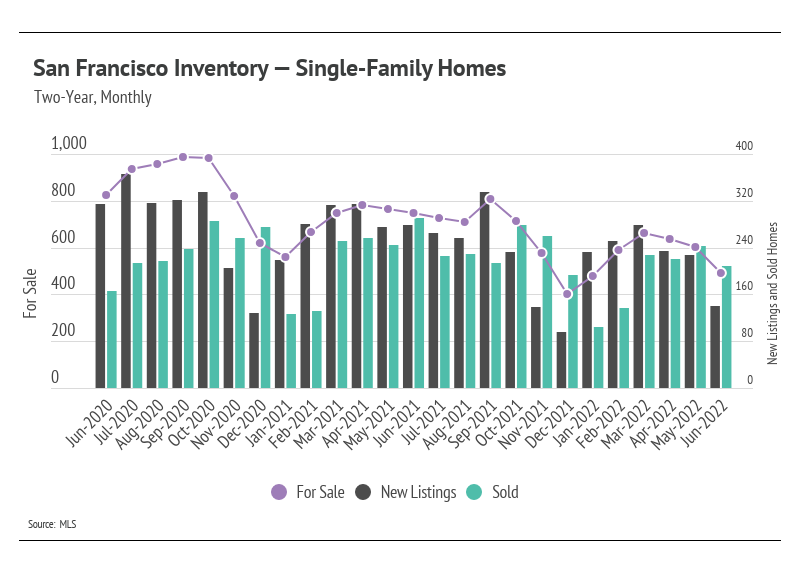
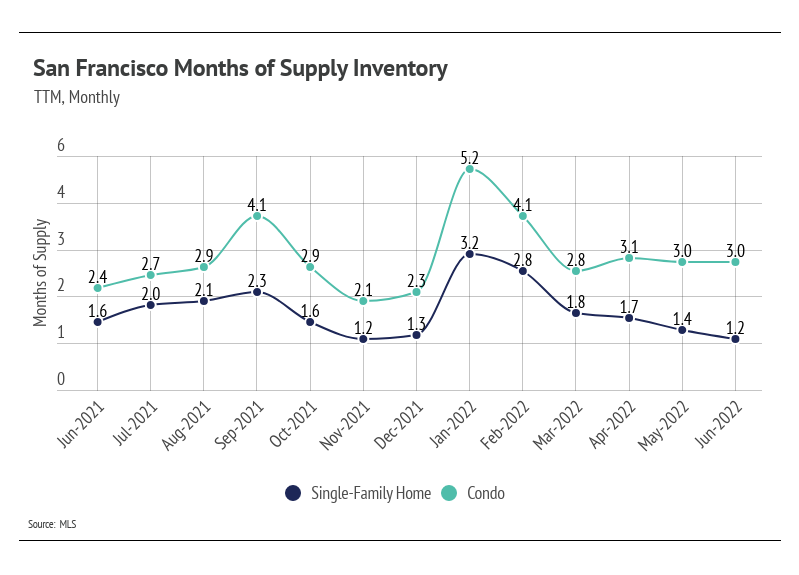
Stay up to date on the latest real estate trends.

BUSINESS
December 1, 2025

BUSINESS
November 1, 2025

BUSINESS
September 1, 2025

BUSINESS
August 1, 2025

BUSINESS
July 1, 2025

HELM Newsletter
June 2, 2025

BUSINESS
May 1, 2025

BUSINESS
April 1, 2025

BUSINESS
March 1, 2025
You’ve got questions and we can’t wait to answer them.